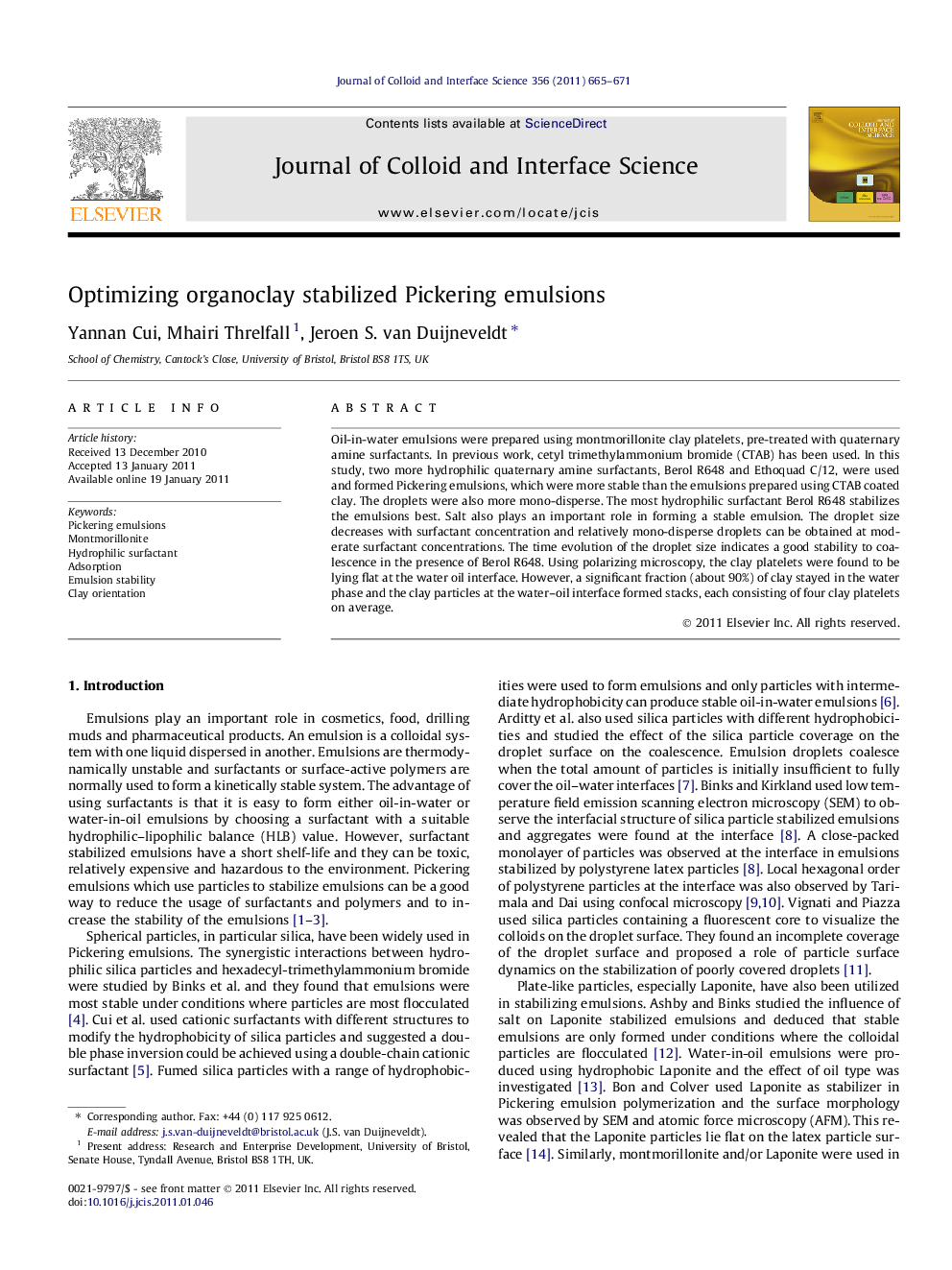| کد مقاله | کد نشریه | سال انتشار | مقاله انگلیسی | نسخه تمام متن |
|---|---|---|---|---|
| 608820 | 880609 | 2011 | 7 صفحه PDF | دانلود رایگان |

Oil-in-water emulsions were prepared using montmorillonite clay platelets, pre-treated with quaternary amine surfactants. In previous work, cetyl trimethylammonium bromide (CTAB) has been used. In this study, two more hydrophilic quaternary amine surfactants, Berol R648 and Ethoquad C/12, were used and formed Pickering emulsions, which were more stable than the emulsions prepared using CTAB coated clay. The droplets were also more mono-disperse. The most hydrophilic surfactant Berol R648 stabilizes the emulsions best. Salt also plays an important role in forming a stable emulsion. The droplet size decreases with surfactant concentration and relatively mono-disperse droplets can be obtained at moderate surfactant concentrations. The time evolution of the droplet size indicates a good stability to coalescence in the presence of Berol R648. Using polarizing microscopy, the clay platelets were found to be lying flat at the water oil interface. However, a significant fraction (about 90%) of clay stayed in the water phase and the clay particles at the water–oil interface formed stacks, each consisting of four clay platelets on average.
Stable oil-in-water Pickering emulsions were formed using hydrophilic surfactant pre-treated montmorillonite particles. The clay platelets were found to be lying flat at the water oil interface using polarizing microscopy..Figure optionsDownload high-quality image (115 K)Download as PowerPoint slideResearch highlights
► Montmorillonite treated with quaternary amine surfactants was used in Pickering emulsions.
► The most hydrophilic surfactant Berol formed the most stable and mono-disperse emulsions.
► Polarizing microscopy showed the clay platelets were lying flat at the water oil interface.
► The clay particles at the water oil interface formed stacks.
Journal: Journal of Colloid and Interface Science - Volume 356, Issue 2, 15 April 2011, Pages 665–671